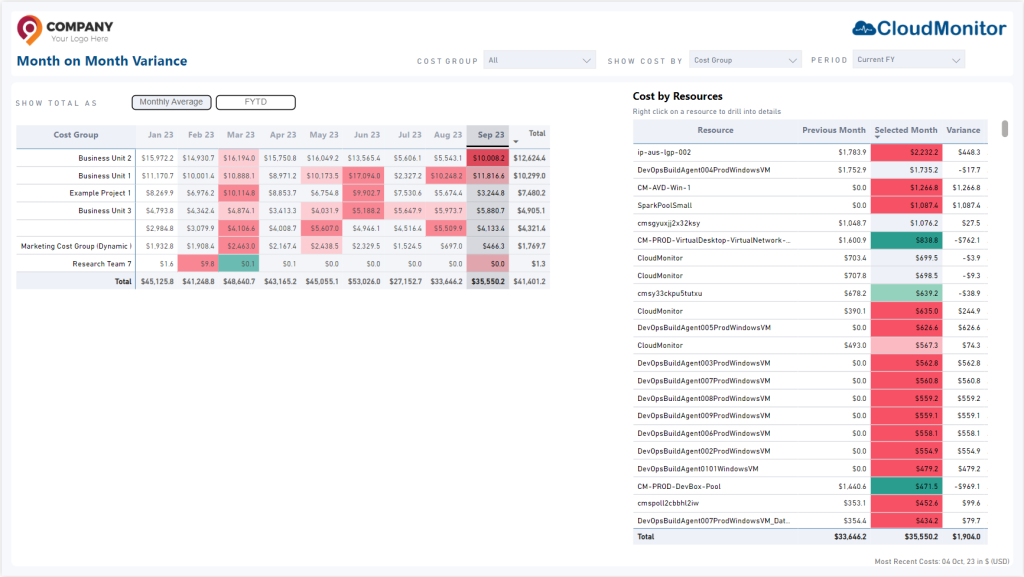Forecasting Capability
By analyzing historical data, you can identify trends, patterns, and seasonality in your cloud usage, and use that information to make more accurate predictions about future usage and costs.
By analyzing historical data, you can identify trends, patterns, and seasonality in your cloud usage, and use that information to make more accurate predictions about future usage and costs. CloudMonitor has reports that can help you analyze past usage patterns and deduce the data to make predictions about future usage and costs.
CloudMonitor features related to Forecasting

Cost Forecasting
Understand your current spend rate and projected forecast for the fiscal year versus previous periods.
Month on Month Variance
This feature offers valuable insights into short-term fluctuations in your cloud expenditure, enabling more agile budget adjustments and immediate cost-saving actions. This granular view complements your long-term strategies by highlighting recent trends and immediate areas for improvement.


Year on Year Variance
The Year on Year Variance page can provide a clearer long-term idea about your organization’s technology strategy, including which technologies to invest in, which legacy systems to retire, and how to modernize your IT infrastructure to meet changing business requirements.
Forecasting Definition
Forecasting involves predicting future spending based on historical spending and evaluating future plans to understand how changes in cloud infrastructure and application lifecycle may impact current budgets and future investment decisions. Collaboration between stakeholders, such as Finance, Engineering, and Executives, is essential to develop agreed-upon forecast models and KPIs that align with business goals. However, there is no one-size-fits-all forecasting method, and cloud spend is variable and challenging to predict due to the ability of engineers to start workloads at any time without procurement processes.
Accurate financial forecasting requires robust FinOps capabilities to provide precise data as input, including fully categorizing and allocating cloud costs. There may be a gap between finance, procurement, and engineering responsibilities, requiring assistance from leadership to meet these obligations. By developing reliable and accurate models to forecast cloud spend, Finance, Engineering, and Executives can inform investment and operational decisions to accelerate an organization’s growth.
To understand cloud finance processes, including forecasting, budgeting, procurement, and allocations, individuals should have a basic understanding of cloud services, compute, and storage, and the billing and pricing models of the cloud providers used by their organizations. Training and certifications, such as AWS Cloud Practitioner certification, Google Cloud Platform Fundamentals course, and Azure Fundamentals learning path, are recommended to gain knowledge specific to cloud providers.
